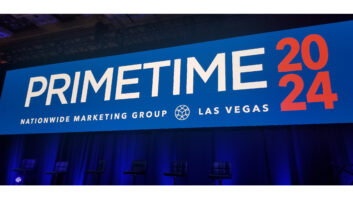Some things have not changed since 1988, a year of retail failures, supplier makeovers, contentious digital copyright battles with the music industry and the launch of new digital formats. The year was also notable in that it marked the first time that a Massachusetts Democrat lost a presidential election to a Republican named George Bush.
Most of us got over that and a few other things, including overt hostility toward the automakers, culminating in a failed antitrust lawsuit by the Car Audio Specialists Association (CASA) against Chrysler.
We mourned the loss of Joseph Tushinsky, the hi-fi pioneer who, in the 1950s, marketed the first Sony-brand products (tape recorders) in the United States and acquired Marantz in 1964.
Our emotions were stirred when we learned that after 18 years in the United States, long-standing hi-fi brand Akai would leave our shores by the end of the year (only to be resurrected more than a decade later), because of the surge in the value of the yen.
The rising strength of the yen led home and car audio suppliers to announce price hikes following price increases for blank audio tapes.
Retailers and suppliers were also still jittery over the impact of the one-day 22.6-percent stock-market crash in October 1987.
Adding to supplier nerves was the 22nd Summer CES, where attendance fell below 100,000 for the first time since 1984.
Outside the industry, it was the year that the United States and Canada reached a free-trade agreement that would eventually spread to Mexico, lead to a worldwide reduction in trade barriers, and culminate in the continued integration of mainland China into the world economy.
Well-known retailers Crazy Eddie and Federated were nearing the end of their days. The investment group that bought Crazy Eddie vowed to institute information systems to control inventory and — what a concept — create P&L statements for individual locations. Management also instituted a campaign to make shopping there more enjoyable and introduced an unforgettable tag line, “Now serving you with a brand new attitude and prices that are insane.”
Later that year, the investor group had its own attitude adjustment when it announced plans to sue former Crazy Eddie management after suffering a $109.1 million loss for the latest fiscal year.
The Federated Group, purchased by Atari in October 1987, likewise turned out to be an earnings drain. Atari sued Federated’s former management for intentionally overstating its value. The following year, Atari would begin to sell off the retailer’s real estate.
Things couldn’t get much worse for the Beta format. Acknowledging the obvious, Beta inventor Sony launched its first VHS recorder, but said it would continue to offer Beta and 8mm hardware.
While one format was fading, others were experiencing false starts, namely DAT, CD-V and CD+G.
JVC and Warner unveiled CD+G, a music CD that displays album covers, still pictures, lyrics, liner notes and other information on a TV while the music plays. The format missed its December 1988 launch date but appeared in 1989, garnered little acclaim and eventually settled into a karaoke niche.
Hardware prototypes of another format, CD-V, were shown at CES in 1987 but never shipped for lack of software. In 1988, Polygram announced a software launch of prerecorded 5-inch CD-V discs containing five minutes of full-motion video and 20 minutes of CD music.
Technology thought to have more promise, DAT, endured further delays. Foreshadowing digital copy-control battles to come, the Recording Industry Association of America (RIAA) threatened to sue the first company that marketed a DAT recorder in the United States. “Bring it on,” the EIA/CEG (now CEA) responded as it established a six-figure matching defense fund to aid the company that thumbed its nose at the music industry.
The hardware and music industries dickered over a compromise to allow DAT recorders into the United States. The music industry finally decided it would not seek a total prohibition on copying, and hardware makers said they would modify their designs to control digital copying. But DAT did not appear until the end of 1988.
Car audio suppliers, however, could not wait. The first car DAT players, which could not record, came from aftermarket suppliers, the first of which was Clarion. Ford and General Motors also launched a DAT option. A limited selection of prerecorded DAT music tapes accompanied the new product, but one of the key advantages of tape. the playback of home-made music compilations was lost.
The music and electronics industries tussled mightily. During the indecisive battle, the National Bureau of Standards conducted tests ordered by Congress of Copycode CD-anti-copy technology developed by CBS. Copycode embedded a no-copy signal in music to prevent CD copying of any sort by recorders equipped with the technology. Not only didn’t the technology work, but the bureau found it created audible distortion in a CD.
While that technology was embroiled in controversy, the RIAA was developing its own called Unicopy, which would prevent a CD from being recorded more than once by a digital recorder and would prevent that copy from being recorded again by the same unit.













